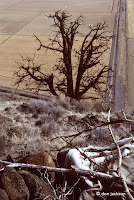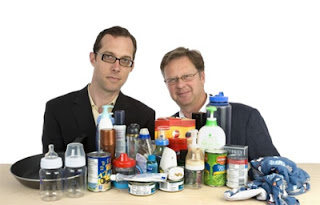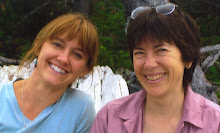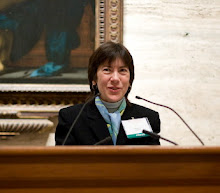My 1990 trip to Klamath Basin with photographer Don Jackson turned out to be unforgettable. We spent our first day waiting for bald eagles in a freezing-cold bird blind above Tule Lake. Despite the miserable cold, the day ended well after several close encounters with eagles flying close enough that we could hear their wingstrokes. Some landed just a few feet away from us.
The next day we went to Lower Klamath Wildlife Refuge, right next to Tule Lake, and traveled its auto-tour routes, designated roads on levees around wetlands within the Klamath Basin's refuges. These wetlands provide habitat for huge numbers of waterfowl as well as attracting raptors on the hunt. To get good shots on the auto-tour routes, Don asked me to drive his van while he stayed ready with his cameras and long lenses, scanning the territory for good shots.
My role as driver involved a lot of quick driving reflexes. As we cruised past the huge flooded fields filled with ducks and geese and herons with hawks and eagles off to the sides watching for prey, Don was continuously (it seemed to me) getting very excited about various birds he was seeing and calling out instructions: "Speed up! Slow down! Stop here!” If you're a birder or a photographer you might know this drill. A few times we did park the van and just sat watching. As Don scanned for good images, I scribbled notes about some of our experiences. Here is an edited selection from these notes.

Up on the right, two tundra swans hear us coming. The noise of the van startles them into a pre-flight waddle. They spread their wings, bodies moving rapidly back and forth, and flapping awkwardly, they lift off the ground. In flight, though, awkwardness drops away. The gawky teenagers become graceful dancers, wings and bodies tracing rhythmic patterns through the air as we give chase.
I'm driving the van. Don rides in the back, surrounded by cameras and lenses. The swans fly right alongside the road, above the irrigation canal to our right. At first they are ahead of us; keeping them in sight, I accelerate to catch them.
"Go on! Go on!" Don urges me as he sets up his camera gear, lens aimed out the window. I speed up again; now I must be going 20, 25, maybe 30 mph on the sloshy road. I lose sight of the birds as the van overtakes them. It's all right, though, because Don has them in his sights and I hear the shutter click and click again. For a few minutes he loses them, as the swans traverse a graceful diagonal in front of the van, bodies lifting slightly with every wingstroke. They cross the road and fly along our left flank. But then, cooperatively, they fly back to the right again and parallel to the road, just in front of the camera lens.
The van rattles as we give chase, sliding back and forth a bit on the snow and ice and crusty mud. We hope that somehow it will be steady enough. Don is shooting at 1/1000th of a second, trying to compensate for the van's bounce and vibration as well as to freeze the motion of the birds. I hear the shutter click again and again; we give chase for another 200 yards before our road curves off to the left and the swans veer off in the other direction. We slow down, stop and watch as their pale silhouettes disappear into the backdrop of snow-covered mountains and patchy gray-clouded afternoon skies.
Photo copyright Don Jackson and used courtesy of Don Jackson Photography. For more of Don's award-winning photography, visit www.donjackson.com. Don also produces green banners -- high-quality banners and signs made from earth-friendly materials, for events and more.










